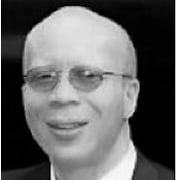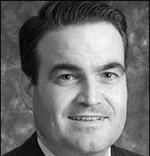
Welcome to Ankota™, where our mission is to enable the heroes who care for the elderly and disabled living at home to focus on care rather than tech.
Ankota's primary solutions are as follows
Ken Accardi, MBA, CEO

Ken was born with a leg issue and couldn't walk until he was 14. The medical attention and surgeries from his childhood led to a passion for healthcare. Ken was a Chief Information Officer at GE Healthcare (NYSE:GE) and VP at Tele Atlas (sold to TomTom (AMS:TOM2)). Ken has also served as CTO for iGetBetter, MedNest, iHope Network and IkaSystems (sold to Blue Cross Blue Shield of Michigan). Ken has been a keynote speaker at numerous national conferences (Medtrade, DecisionHealth, Connected Health), and a lecturer at Harvard, MIT, Bentley University, Babson College and UMass. Ken also serves as a mentor for the MassChallenge accelerator. Ken has an MBA in Entrepreneurship from Babson College, an MS in Computer Science from Virginia Tech, and a BS in Engineering from Bucknell.
Carmen Poppa, CTO

Carmen lead the software development team. In addition to her top-notch programming and technology leadership skills, Carmen is a fantastic customer advocate and provides unparalleled support.
Sharon Dodge, COO

With her past experience in scheduling, billing, and project management, Sharon has brought a broad-based perspective to Ankota's implementation processes. Sharon has been with Ankota since 2018. She has a keen eye for detail and loves documentation. She will never turn down chocolate.
Vijay Pandey, VP of Sales

Vijay has 15 years of experience in Marketing and Sales and is an expert in the home care market, and specifically in the sale of Electronic Visit Verification (EVV) solutions (a requirement from the 21st Century Cures Act for the prevention of fraud).
Since completing studies and achieving Valedictorian rankings throughout his primary education, and advanced studies in marketing and computer science, Vijay has grown quickly in his career with positions of increasing responsibility in healthcare, health insurance, nutraceuticals, digital marketing, and of course home care.
Kirstin Speaks, Director of Customer Support

Kirstin is the Director of Support and has been with Ankota since 2020. She brings 7+ years of Home Care Experience of operations, scheduling and caregiving. Kirstin also manages Customer Success and our Ankota Cares customers. She enjoys learning and talking to new upcoming Administrators about their business.
Jeremy Jed Hammel, Director of Marketing

Jeremy Hammel, whose friends call him Jed is a veteran digital marketer with strong home care expertise.
Jed began his career in Los Angeles in the TV and film industry where he directed and produced shows such as NBC's The Tonight Show. He also directed the multi-award-winning film The Legacy.

Ken, who is sometimes referred to as the "Home Care Software Geek" founded Ankota to enable the next generation of home care. Ken was previously a Chief Information Officer at GE Healthcare (NYSE:GE) and VP at Tele Atlas (sold to TomTom (AMS:TOM2)). Ken has also served as CTO for iGetBetter, MedNest, and Veritas Health Solutions (now iHope Network). Ken has been a keynote speaker at numerous national conferences (Medtrade, DecisionHealth), and a lecturer at Harvard, MIT, Bentely, Babson College and UMass. Ken also serves as a mentor for the MassChallenge accelerator. Ken has an MBA in Entrepreneurship from Babson College, an MS in Computer Science from Virginia Tech, and a BS in Engineering from Bucknell.

David is a seasoned veteran of the home care industry with over 25 years of experience. David co-founded StatChek, Inc., a pioneer in home care voice telephony, which was later acquired by Computer Outsourcing Services, Inc. (NASDAQ: COSI), today a part of Wi-Pro (NYSE:WIT). David was a part of the startup team at AccentCare, Inc., has founded and managed homecare agencies and served as the Medicare administrator for Interim Healthcare of Atlanta. He is also one of the principal developers of a novel model for post-discharge patient management.

Burgess brings over 20 years of executive level experience in telehealth, communications, technology marketing and sales. A pioneer in electronic visit verification (EVV) and telephony, Burgess has spoken at NAHC conferences and has received healthcare tech industry innovation honors. Most recently he cofounded Triple Aim Technologies, the leader in remote patient monitoring with its Multi-Morbidity Engine™ technology for the post acute care market. Outside of Ankota, Burgess serves on the board of directors for Tradehome Shoes, a 109 store retail shoe chain in 21 states. He was formerly an adjunct professor at the New York College of Technology. Burgess holds an MBA from the University of New Haven.

Most recently with Savii Care, Hamilton brings 20+ years of sales and marketing experience in high tech and enterprise software with the last 9 years being exclusive to the post-acute technology space having worked with providers of home health, home care, DME and Infusion. Hamilton is committed to providing unparalleled customer focus, true teamwork, leadership, delivering sales performance and increasing value for early stage and/or start up companies.

Sara has 10 years experience in project coordination and project management. Her last 5 years have been focused in healthcare administration specifically in Adult/Pediatric Therapy, Orthopedics, Private Duty Home Care and Skilled Nursing Facilities. Sara brings a combination of industry, administrative and technological insight to focus on implementation, documentation, and training to support our customers.

After 15 years at State Street Global Advisors, where he served as SSgA’s investment Committee Chairman overseeing $2.1 trillion in client assets, Shawn founded Guidon Global LLC, an investment management firm.
Shawn is the lead Ankota investor and serves on the Ankota Board of Directors.